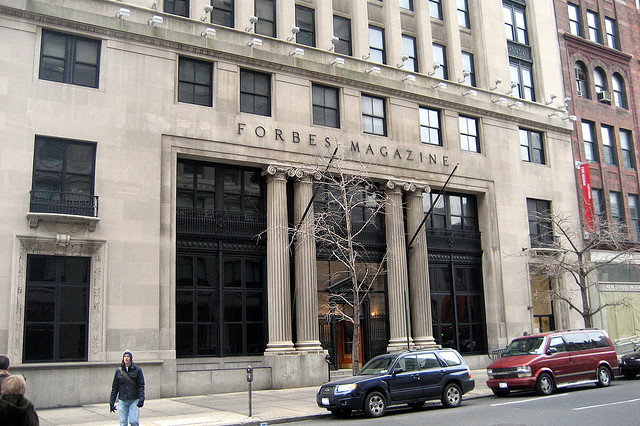
Two years after launching its brand platform AdVoice, Forbes has learned a couple things: Its top advertisers like content programs, and they remain a small slice of overall revenue. Forbes is betting the former will outweigh the latter in the long run.
It has rebranded the service to BrandVoice to differentiate it as content marketing and is expanding it into video. Forbes is positioning the content product as a premium service, building up a content services division and often bundling BrandVoice as part of pricey integrated buys that carry a $1 million minimum.
The moves are meant to make BrandVoice a bigger part of the Forbes ad picture. Right now, according to a post by Forbes’ Lewis Dvorkin, the content ads generate just 10 percent of the company’s revenues. On the plus side, according to Meredith Levien, Forbes’ chief revenue officer, BrandVoice is the fastest-growing part of its business. Forbes is a big enough believer to employ a team of six as part of a content team for advertisers.
“Over the past two years, we made our participant base understand what AdVoice is: content from brands, not editors,” said Levien. “We’re now signifying this is a different kind of content.”
But for all the attention the industry is heaping onto this type of format, it’s still a small piece of a media company’s business. And while it’s still in its embryonic form, most publishers can’t yet go whole hog into the sponsored content marketplace. The economics don’t add up. For all the talk of non-existent returns on banner ads, the fact is, banners are still a $20 billion industry. Forbes, along with other content publishers, is clearly feeling its way in finding out how big this can become.
The only way to do that is by building out a content services team, much like what BuzzFeed, Gawker and HuffPo have done. Forbes has added what it calls a “service bureau,” which operates like a creative services team, to help brands publish content of interest to readers across not only the site, but also social media. With 18 brands — examples include AdVoice oldtimers SAP and NetApp and new partners like Oracle and UPS — Forbes is convinced that this is the right model for its brands and its readers. While Forbes initially concentrated on text content, it is now expanding into video. Cartier, its first client, is running a three-part content series of one-on-one interviews between a new and an experienced entrepreneur. The first one is a dialogue between former NFL player and two-time Olympian Jeremy Bloom and Thrillist CEO Ben Lerer.
“The basic idea is more of an organic system of marketing content,” Levien said. “And it’s presented in a credible news environment where the user is looking for that content.”
Forbes sells BrandVoice in two ways. The first is selling the right to use the platform based on significant spend around sponsorship, with buy-in starting at $1 million, where marketers buy across print, digital or integrated programs. The second option, for the marketer who may not have a campaign in digital or print, is a monthly fee, with a minimum of six months.
“I was here when we launched AdVoice, and we were excited that marketers could be content creators,” Levien said. “In the last six months, the market has changed, and the biggest thing we hear from brands is about, ‘How can we be a content publisher and publish content that adds value?’ For us, it went from swimming up stream with a new product to it feels like everyone’s talking about this and signing new partners at a faster rate.”
More in Media

Media Briefing: Publishers who bet on events and franchises this year are reaping the rewards
Tentpole events and franchises are helping publishers lock in advertising revenue.

With Firefly Image 3, Adobe aims to integrate more AI tools for various apps
New tools let people make images in seconds, create image backgrounds, replacing parts of an image and use reference images to create with AI.

Publishers revamp their newsletter offerings to engage audiences amid threat of AI and declining referral traffic
Publishers like Axios, Eater, the Guardian, theSkimm and Snopes are either growing or revamping their newsletter offerings to engage audiences as a wave of generative AI advancements increases the need for original content and referral traffic declines push publishers to find alternative ways to reach readers.





